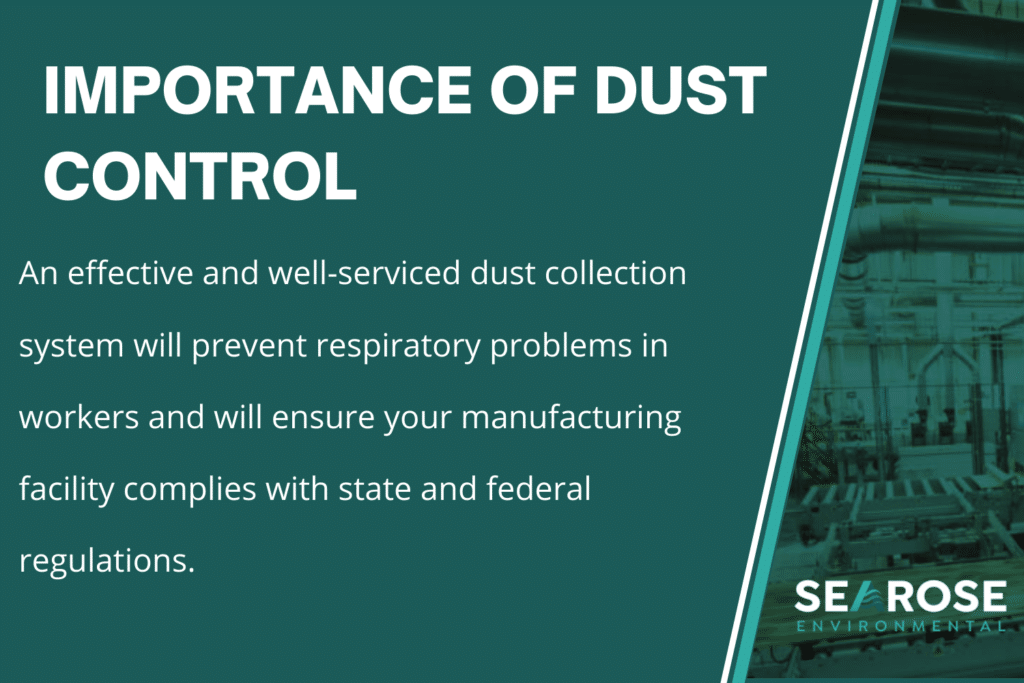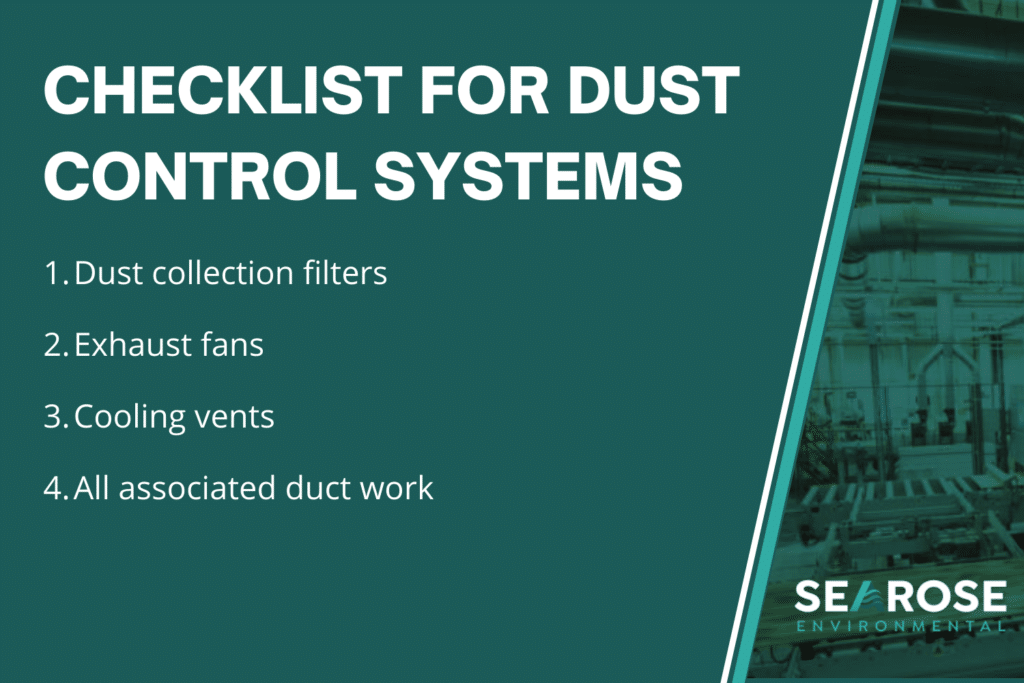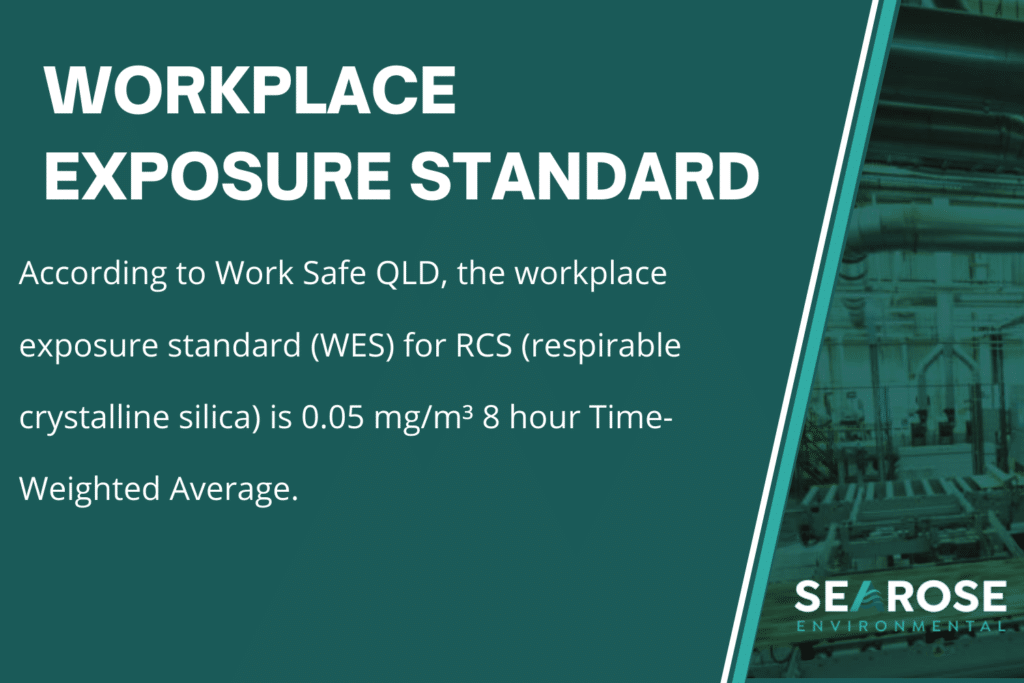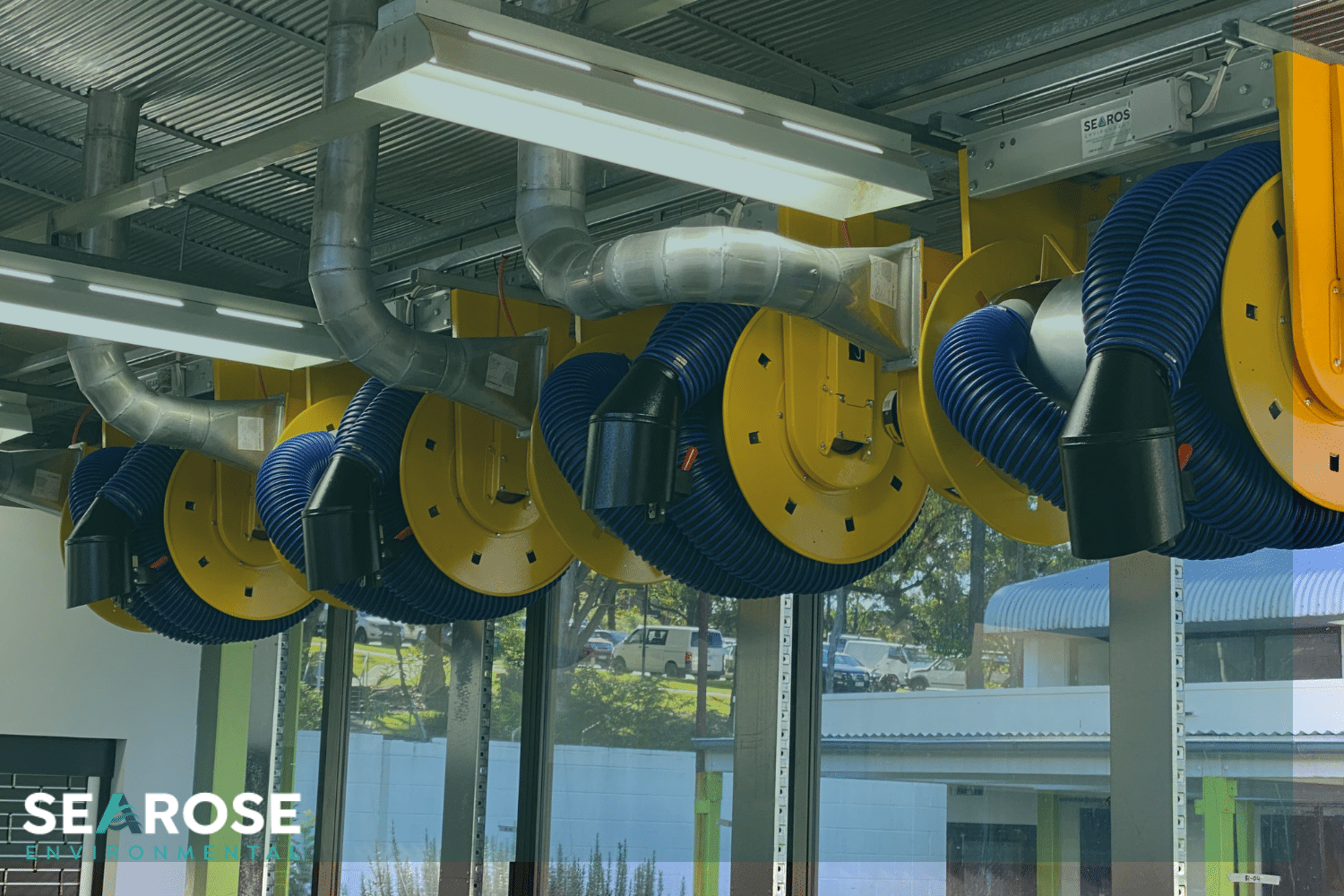Hazards faced on job sites are not limited to equipment or user error. Environmental conditions also pose severe health and safety risks to those on-site. Beyond the more obvious safety concerns, dust is a constant concern that is often perceived as less harmful than it actually is To help you understand just how harmful dust can be, Searose Environmental will expand on the importance of dust control in manufacturing and seven safe practices to ensure worker safety.
Importance of Dust Control in Manufacturing
Dust’s lethality is wholly underestimated in the manufacturing industry. Dust control in manufacturing is far more imperative than any residential or domestic space. In the manufacturing context, dust is made of minuscule particles of substances like:
- Ceramics
- Powdered crystal
- Concrete
- Wood
- Metals
Several characteristics of dust make its control in manufacturing critical: Its toxicity, combustibility, and size of particles.

1. Toxicity
So just how poisonous is dust? Well, dust is produced in almost all stages of the manufacturing process. Operations like cutting, grinding, and sandblasting will all produce dust that contains silica. Silica is a mineral compound linked to an astonishing amount of intense health issues.
Workers exposed to these kinds of dust hazards regularly, either through dermal contact or inhalation, can develop severe allergic reactions, harsh skin conditions like dermatitis, or various respiratory diseases.
Of those conditions, respiratory conditions are the most serious and are often chronic. These can range from asthma, silicosis, to lung cancer.
2. Combustibility
The second risk posed by dust particles, and another reason for proper dust control in manufacturing, is the explosive temperament of some types of dust. Combustibility refers to how dust reacts with air and whether or not it can catch fire or explode. Many substances will catch fire if exposed to air, including sugars, flour, grains, and metal. Practically invisible to the human eye, combustible dust particles remain a deadly hazard in many workplaces and industries and must be managed effectively.
Dust explosions occur after a high concentration of combustible dust is ignited in an enclosed space. When these ultra-fine particles are mixed with oxygen, the reaction can detonate them after contact with a spark, cigarette butt, metal ember or any ignition source. This almost instant combustion process is known as deflagration and results in a high-pressure airwave./
3. Size
One of the more apparent reasons for dust control for manufacturing is the efficacy of dust to infiltrate machinery operating systems and cause significant damage. Accumulated dust damages worksite machinery, which decreases practical life and efficiency of equipment. Excessive dust will block vital ventilation systems in-built to machines, causing the engines to overheat and become a fire hazard.
All moving components of a piece of equipment are at risk of being damaged by dust. Inhibiting the movement of critical parts will decrease the accuracy of cutting or sawing machines and affect manufacturing output. Dust can also contribute to the premature wearing down of vital components of larger machines.
Ensuring Effective Dust Control in Manufacturing
Sweeping dust away or blowing it away from areas with air are intuitive ways of cleaning and removing dust from a workspace. However, these are nowhere near the most effective dust control methods and will merely disperse the dust. The following techniques are some of the more useful dust control methods in manufacturing.
1. Thoroughly Clean Workspaces Frequently
Inspecting and cleaning workspaces thoroughly should be routine at any worksite or manufacturing facility. Workers or cleaning staff must thoroughly clean hidden areas around workspaces. Above support beams, behind false ceilings, and inside ventilation shafts are regularly overlooked cleaning spots, allowing dust to accumulate there.
2. Capture Dust at the Source
Any effective dust control in manufacturing should endeavour to capture dust where it is being produced. Operating with a dust hood or collection point nearby will transport the particles away from the workspace through a duct system into a dust collection. Powered by extractor fans, these systems pull the dust particles away from sawing, cutting, or grinding machines and allow for dust to be collected and safely disposed of.
3. Proper Maintenance of Equipment
Regularly servicing manufacturing equipment and ventilation systems will ensure effective dust control. Just as with equipment that produces dust, establishing a proper inspection and cleaning procedure will combat the effects of dust accumulation. Ventilation systems will only function as intended when cleaned or emptied regularly.

4. Understand Your Materials
Understanding the risks associated with certain materials and communicating dangers to workers is fundamental to effective dust control. Lack of education is a considerable risk factor when working with dust, as many workers either do not know the risks involved or are uninformed about their severity. Identifying dust particles as toxic or explosive is crucial to ensuring workers take greater precautions to minimise accumulation.
5. Isolating Areas Prone to Dust
In any manufacturing environment, there will be areas more prone to dust production than others. One applicable method of dust control in manufacturing settings is to isolate areas prone to dust generation from the rest of the facility. Partitioning solutions such as PVC strip doors or rapid doors are commonly used to control entry to certain areas and contain dust particles in a centralised zone. These make the collection of dust much more manageable and increase the safety of workers in other zones.
6. Remove Dust Exposed Surfaces
Mindful workplace design will eliminate excessive surfaces where dust can accumulate. Unnecessary flat surfaces used infrequently are the perfect locations for dust particles to build up and will become dispersed if not cleaned correctly. By implementing measures that lower the chance of dust accumulation in warehouse design, you control a hazard whilst also decreasing time spent thoroughly cleaning the area.
7. Operate to State or Federal Regulations
Managing dust control in manufacturing is a regulated practice in all states and territories of Australia. Having proper dust control techniques is mandated by law, and fines apply for uncontrolled cutting, drilling, grinding, and polishing. Governmental inspectors can issue prohibition notices for work that generates abnormal levels of silica dust. Keeping your workplace in line with legislation will ensure the safety of workers.

Factors To Consider When Selecting a Dust Control System
Dust control in manufacturing settings is best done with the assistance of an effective dust control system. Three major factors to consider when selecting your facilities next system:
- Find a system that is easy to install and with a filter that can be cleaned and or replaced straightforwardly.
- Select a manufacturer that specialises in dust collection and with a good reputation in the industry.
- Ergonomically sound machines are essential for those cleaning or emptying the system. Ensure the purge levers are easy to access.
Searose and Dust Control in Manufacturing
Searose Environmental are the industry leaders when it comes to active dust control. Searose has every aspect of your facility’s dust control program covered, from the top of the line dust collectors, to reliable rapid doors, and even ducting systems. Our installation service involves a full site inspection, assessment of workshop requirements and exact fitting of the machinery needed.
Contact the Searose Environmental team today for a free no-obligation quote for a system that will meet the demands of modern manufacturing. We offer dust control installation across Sydney and Brisbane, as well as leading dust equipment servicing. Either give us a call on 1300 484 849 or enquire online, and we’ll get started with developing a quote for your workplace.
